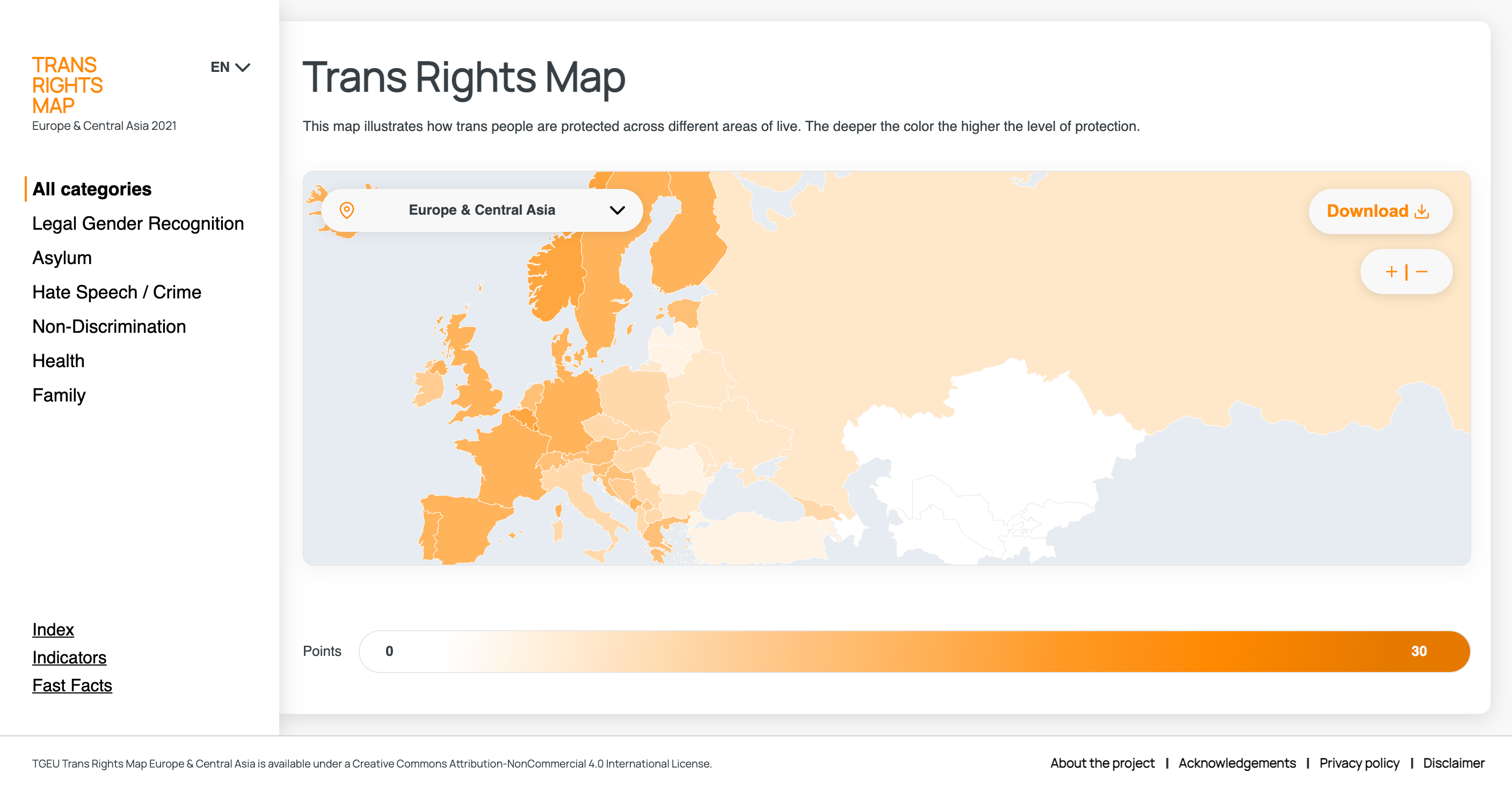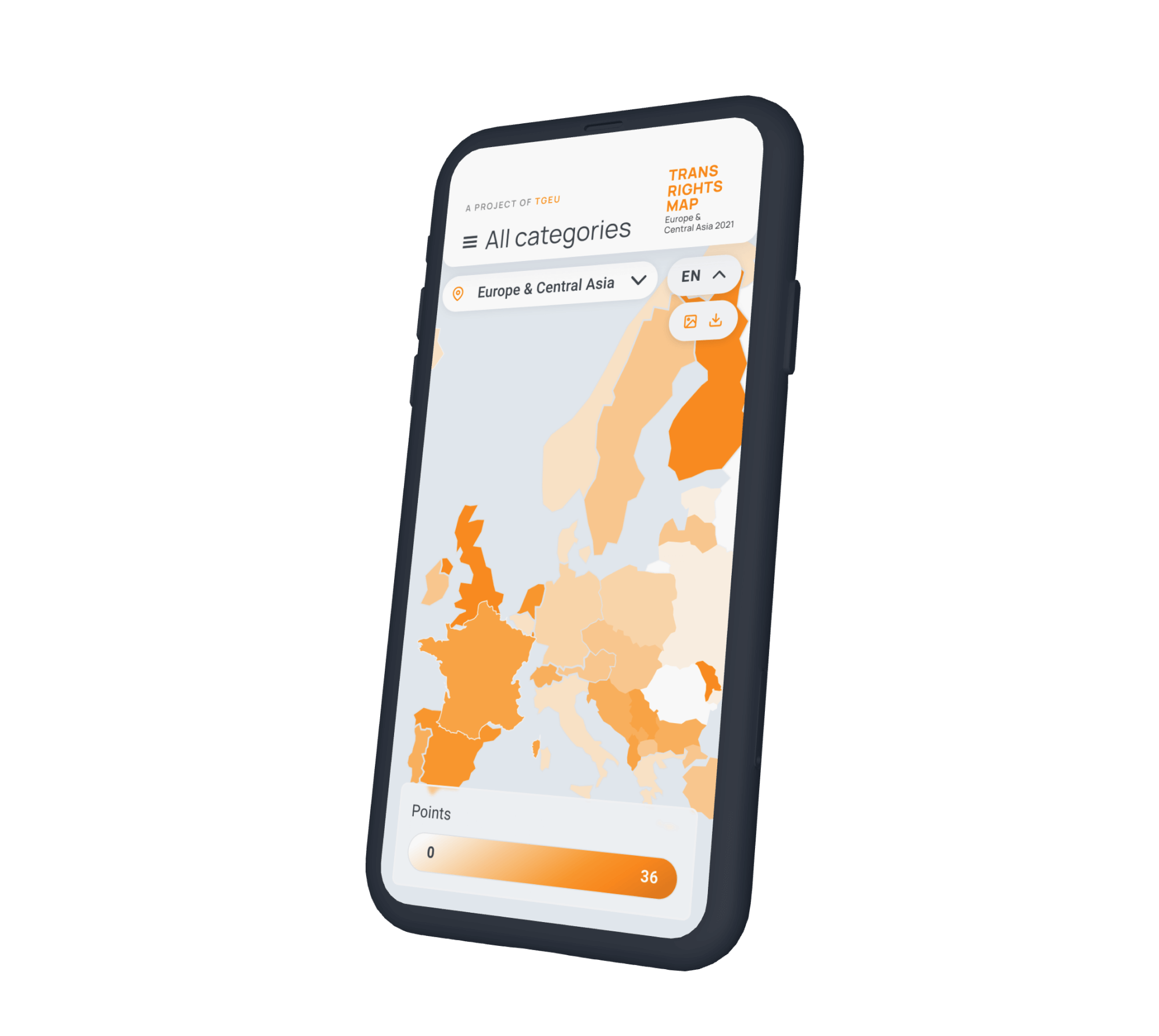Design of TGEU’s first digital trans rights index.


TGEU Trans Rights Map illustrates the legal situation of 49 countries in Europe and 5 in Central Asia.
The main goal of this project was to pass from a table sheet view to an interactive filter-based map — aim to be used by activists and politicians. It shows country-specific requirements for legal gender recognition, as well as existing protections for trans people in asylum, hate crime/speech, non-discrimination, health, and family.
For this project, I interviewed delegates of the European Council, activists, country representatives to further understand context of usage, and this way be able to provide useful features.

The main goal in this map was to show information that was precise in terms of punctual rights, as well as the context such as country.
This provides vision on the state-of-things, as well as a strong motivation for countries to step up in the law making process to ensure the rights are met.
Every country becomes an object with it's own measurement, allowing for a quick overview of the state-of-things in the different dimensions : Legal Gender Recognition, Asylum, Hate Speech / Crime, Non-Discrimination, Health, Family.
.png)
A vast majority of the dimensions measured in this map are complex subjects that require 2 or more laws. Which is why we broke it down via filters that allow to vision each of the laws that make up a dimension.
.png)
To better motivate countries to take action, TGEU decided to cluster countries in a level system, different requirements help countries get to a higher level. The challenge here was to explain each cluster, and let users interact and see the countries per cluster.
.png)
Since a big part of activists and EU council members need information on the go, I designed an immersive map experience, where users can access overview information quickly.
